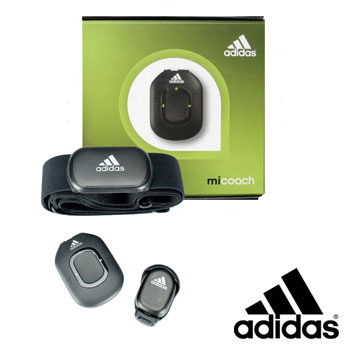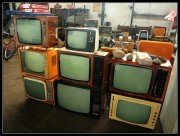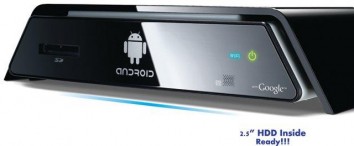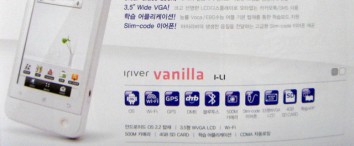Game achievements or trophies are a big part of video gaming. Introduced first in the game Halo 2, the concept of earning achievements or trophies has caught on in a big way that it has been implemented not just in PC games or console-based games but even in games that you can find in social media sites or on your smartphones or tablets. [Read more…]
Search Results for: tablet
Adidas to Release miCoach Speed Cell Tracking System
Fitness in the 21st century is becoming more and more enmeshed with technology. The Apple – Nike partnership was one example of this intertwining of sports, fitness and technology. Adidas is also taking this step towards the fitness-technology interface with the introduction of the miCoach Speed Cell Tracking system.
The new system is designed to work with more sports and not just limit itself to running. The new system will work with sports like football, basketball, tennis and soccer. The $70 miCoach Speed Cell Tracking System will record data that is not just limited to the distance you ran. [Read more…]
Google Nexus One vs Google Nexus Prime
When Google released its flagship smartphone product the Nexus One, it received rave reviews and has continued to be a player on the portable device market. Now two models removed from the original, we see how the Nexus One stacks up against the yet to be released Nexus Prime.
Dimensions and Form
• Google Nexus One – 119 x 59.8 x 11.5mm, 130g
• Google Nexus Prime – Unreleased
The minimalist shape and chrome build of the Nexus One has been a popular aesthetic with many critics. The screen uses up the majority of space, and this always improves the look of portable devices. The touch-sensitive buttons and fluid track ball juxtapose nicely with the overall countenance. It’s patently obvious that Google is fond of the design, as the Nexus Prime shows little alteration in this regard.
Winner: Draw
Display Screen
• Google Nexus One – 3.7 inch AMOLED capacitive touchscreen, 480×800 pixel resolution
• Google Nexus Prime – 4.7 inch, 1280 x 720 pixel resolution with Samsung PenTile Matrix Technology
While the builds are similar, the Nexus Prime’s significantly larger screen sets it apart from the Nexus One. Despite the quality of the Nexus One’s 252 pixel per inch AMOLED screen, it is hard pressed to compete with what is rumored to be the first 720p smartphone. Other features likely to be included are multi-touch and an accelerometer sensor.
Winner: Google Nexus Prime
Processing Power and Memory
• Google Nexus One – 1GHz Qualcomm Scorpion processor with Adreno 200 GPU, 512MB RAM
• Google Nexus Prime – 1.5GHz dual core TI OMAP4460 CPU and a PowerVR SGX540 GPU, 1GB RAM
The Nexus One was potent for its time, backing its 1GHz Scorpion processor with an Adreno 200 GPU and 512MB of RAM. Yet as we begin to see dual core processors become standard in tablets, it isn’t surprising that the architecture would eventually find its way to smartphones. The Nexus Prime is said to boast a brawny 1.5GHz dual core TI OMAP4460 processor supplemented by a PowerVR SGX540 GPU and 1GB RAM, revolutionary for a device that fits in the palm of your hand.
Operating System
• Google Nexus One – Android 2.4 Gingerbread
• Google Nexus Prime – Android Ice Cream Sandwich
The Nexus Prime once more is the beneficiary of a next generation upgrade, as the smartphone will roll out with the much anticipated Android Ice Cream Sandwich. Currently, the Nexus One runs Android 2.4 Gingerbread, yet it too will reportedly be upgrading to the next generation software.
Designed for both tablets and smartphones, Google has stated that Ice Cream should end the fragmentation that has occurred with its various iterations such as Gingerbread and Honeycomb. Ice Cream combines the best of these operating systems in a more efficient, app and multi-tasking friendly experience, including enhanced Javascript and Open GL graphics acceleration. Browsing promises to be much smoother than on the clunkier Gingerbread, and Google has also indicated Ice Cream will have voice and facial detection software included.
Winner: Draw
Camera
• Google Nexus One – 5 MP primary camera
• Google Nexus Prime – 5 MP primary camera with 2560 x 1920 pixel resolution, 2 MP secondary camera
The Nexus Prime is reported to have a 5 megapixel primary camera that is capable of full 1080p HD video capture. In addition, the camera should come equipped with the usual features, such as auto-focus, digital zoom, and a secondary camera for video calling, but the video capture is DVD quality.
Winner: Google Nexus Prime
Conclusion
As the newer model, the Google Nexus Prime is naturally the more advanced device. Yet the difference between the two models is staggering, considering the dual core processor, the 720p display, and the 1080p video capture in the Nexus Prime. For Nexus One owners, truly this is a case where the cost of an upgrade is justified.
Article written by Sarah Richards from MobileBroadband.net. Sarah writes on a wide range of broadband topics including 3 broadband reviews.
How Will We Be Interacting With Our Video Games In The Future?
In a season of price cuts and with the Wii U only a year away, people are naturally wondering what the next big thing is in the world of video games. And since controllers have been such an important element of the current generation, how are we going to be controlling our games in the future? Here’s my thoughts on the technologies out there:

Touchscreen Gaming
Hey, this is easy. Turns out that some elements of the present of video game hardware will probably be around in the future (no, really!). The DS brought us touchscreen gaming over half a decade ago now, but that technology looks especially primitive compared to the offerings from the current wave of smartphones (though the simplicity of smartphone games still leave something to be desired). What’s the future of this technology? Essentially, going bigger and better. Invest in a tablet pc and you’ll immediately see the difference that having a screen nearly three times the size of smartphone can make: precise control over the field of play, as well as far more superior visuals. With a large screen area, you also have more space to integrate input areas, allow for more complex games.
Nintendo’s Wii-U is the immediate future of this tech: a handheld display for a TV-based console providing full touch-screen interaction with the game onscreen (or alternatively, interaction with other information relevant to the player). For me, this is exciting because there are plenty of stagnant game genres that have been consigned to the PC because neither joypads nor motion control have been adequate replacements for the mouse and keyboard. The strategy game springs to mind instantly: games in the vein of Starcraft and Command & Conquer could be revamped for home console play (and touchscreen monitors may ensure that PC versions remain relevant).

Motion Control
Motion control has sold millions of consoles (Wii), and shifted many peripherals (PS3 Move and Xbox 360 Kinect), so is there any doubting that it’s here to stay? Well, flying in the face of overwhelming evidence, I still completely believe that this has been a very successful gimmick. Wiis collect dust, and nobody seems to have the enthusiasm sufficient for developing games for the competitor’s systems. And it all seems like a bunch of daft flapping to me: gesture based control, rather than literal ‘motion’ control.
But in the long term, motion control has the potential to be a cornerstone of interactivity. Microsoft’s Kinect technology is most interesting, as it potentially solves the problem of interactivity solely being about our hands, bringing our entire body into play. But even this kind of motion will always be a source of detachment: objects we pretend to hold will have no weight, we’ll have to ‘pretend run’ to move anywhere. Visions of full-body robotic motion suits arrive in my head with B-movie gusto.

Virtual Reality?
We are, however, getting into the dangerous realm of controllers that would be incredibly immersive, but would be incredibly difficult to sell to people. For all of its motion control innovation, the Wii controller’s most intelligent feature was the fact that it was shaped like a television remote control. It gave consumers something familiar to latch onto when seeking a new experience. Even 3D cinema glasses have found success only by adopting the familiar Wayfarer design.
Full-body motion suits? Scary science fiction nonsense. And another classic idea we’re always going to have trouble accepting is the VR helmet. After decades of uncomfortable, daft looking products and bad science fiction featuring them, we just can’t take them seriously. Perhaps someday someone will develop something sufficiently lightweight and ordinary looking that becomes a mass market favourite. Sony’s new HMZ-T1 3D Virtual Reality Headset is part of the evolution, but don’t expect it to be a huge success. But how are we supposed to interact with games if we can’t see our hands whilst using these things? Motion control probably isn’t the answer, at least if you like not smashing expensive VR visors.
Gamepads
If it ain’t broke, don’t fix it. Video game controllers have reached a sort of equilibrium in the last decade, and though the number of triggers and the position of the two joysticks will vary, there’s a definite formula. Any future console could take a cue from the Vita and feature a rear-mounted touch pad, and motion control seems a likely candidate for inclusion too. But the simple tactile feedback, durability and ease of use of a button has been grossly underestimated in the last few years.
Steph Wood is a copywriter and gaming blogger working on projects for Comet, a UK based retailer who stock cheap iPad 2s and other gadgets.
The Future of TV
When you collapse in front of the box after a hard day’s work, do you ever wonder what your television will look like in the next decade? Probably not, as you’re too busy watching whatever is on, but let me tell you – the future looks awesome. Entertainment is a big part of everyone’s lives and the people behind innovations in the television industry are really starting to push the boundaries. Your parents will remember the first black and white television, a bulky and relatively small contraption. Then came colour TV’s and people were again amazed. Nowadays you have massive flat screen LCD’s offering high definition viewing that is clearer than ever. What’s next?
Improved 3D TV:
Ok, so you can already get a 3D television which requires you to wear glasses to get the most out of it. While this may be ground-breaking at the moment, there will come a time when you can simply switch it on a ditch the glasses.
OLED technology:
Your LED display may be doing a pretty good job now, but OLED is likely to take over the throne. Organic light emitting diodes (OLED) emit their own light, unlike other technology which requires backlighting. What this means is that the screen can be thinner, better quality, flexible and energy efficient – making it a green choice.
Portable TV:
The internet is playing a vital role in the future of entertainment, with many people opting to stream movies directly from the web to their TVs. But with the rise in smartphones and tablet PC’s, this technology is expected to get even better in the coming years.
Ultra-definition TV:
So you thought HDTV was the clearest thing possible – think again. Ultra-definition will be a vital component as screens get larger, as it will have a 3840-by-2160-pixel resolution instead of the 1920-1080 that makes up high definition. This will ensure that you have a crystal clear and sharp image on an 82-inch screen, and the zoom capabilities will blow your mind away.
Screens the size of your living room wall, unrivalled clarity, immense surround sound systems, movies that come to life – these are all the things you can look forward to in the years to come. For now, let’s not forget that there are some amazing products on offer and your viewing experience is completely different to what it was a decade ago. Rest assured – the future of TV is awesome!
Jason Acar is a sports and all things technology enthusiast. He has written articles on fleet tracking and fuel management to name a few.
New Android-based Media Player Released
Let’s face it. With digital files populating the internet, it is so easy to get video or audio content from wherever you’re sitting right now. It is now so convenient to be watch the latest episodes of your favorite TV shows because it is usually available “in the wild” an hour or so after it airs. Because of the growing proliferation of digital files, people are now looking towards freeing this content from the confines of their computers. [Read more…]
Telkin Releases User-Friendly Touchscreen PC
Touchscreen technology has really changed the way we use computers and how computing is done. Tactile manipulation, control and feedback brings an added dimension to how we interface with computers. This is most apparent with how easily we use tablets and how intuitive it is. Transporting that level of control to desktops have been done before but hasn’t gained traction yet. [Read more…]
iRiver To Release Two Smartphones
When I was shopping around for my first portable media player I was only considering two brands. The obvious one was Apple because the iPod brought status symbol coolness with its device (and who wouldn’t want to get a status symbol in these image-conscious times?). The other choice was an iRiver media player because of the great reviews it was getting regarding its far superior audio quality compared to the iPod. I eventually settled for an iPod because iRivers were quite hard to find at that time but the iRiver quality is something I’ve never forgotten to this day. [Read more…]
Bicycle Wine Rack for the Eco-Friendly Wine Lover
What’s your favorite mode of getting around? What’s your favorite (alcoholic) beverage? If your idea of relaxation is to take your bicycle out into the countryside (or the park, if you are an urban dweller) and enjoy a nice bottle of wine some time during the day, then you are in luck. I just discovered this little Etsy shop selling a handmade wine rack designed especially for those who like to spin their bike’s wheels. ((Etsy Shop))
Jesse from Montreal, Canada, obviously has a penchant for carrying a bottle of wine while on his bike and has come up with the Bicycle Wine Rack to solve the problem of keeping that bottle intact without getting in the way. The Bicycle Wine Rack is made of leather and some antique brass fasteners.
Those of you who pay particular attention to aesthetics will be interested to know that the leather is oil-treated and vegetable-tanned, meaning that it will become even more beautiful with age and use. And as you continue with your regular forays into the great outdoors on your bike, your Bicycle Wine Rack will only benefit from it.
As for functionality, the image may send across the message that the Bicycle Wine Rack is not a very secure contraption. However, there are hidden clamping mechanisms put in place by the maker, ensuring that your wine bottle has never been more secure! If you need more proof, here is a video showing the Bicycle Wine Rack in action.
I am not so sure about using the frisbee as a wine glass, but whatever floats your boat!
I know the Bicycle Wine Rack is not an electronic gadget, but it is a perfect accessory for someone who is always on his/her bike. With all the accessories that you get for your mp3 players and phones (not to mention tablets and other gadgets you take with you on the go), why not make sure that you always have space for a bottle of wine? After all, you never know when it will come in handy.
Other important details…the Bicycle Wine Rack will only fit bikes that have a 1-inch frame, so if your bike is special, then you might have to get an equally special rack made. Also, the racks have been rather popular so the newer units are taking longer to ship.
Watch Video on Your Ebook Reader
Is your Kindle or Nook (or any other ebook reader) your constant companion? Have you shelved your “real” books for your ebook reader?
I am a book lover – in any format, really, but the convenience of ebooks make this format my main choice lately. One thing about ebook readers these days – at least those that function mainly as ebook readers – is that they are rather limited in functionality. I am not talking about the iPad, Samsung Galaxy, and other similar tablets. These devices can definitely be used as ebook readers, and they excel at that.
If you get the chance to use ebook readers such as the Kindle and the Nook, though, you will immediately notice just how limited they are. Then again, if all you really want or need is to read books (which is what these things are made for), then there is no issue. On the other hand, if you feel like getting more out of your ebook reader, you’ll be interested in what software developer Mark Longstaff-Tyrrell has created.
He has developed software that will allow you to watch video or animation on your ebook reader. Nook and Kindle owners already know that their devices are not meant for video playback. Knowing that, however, does not mean that one would not want the ability to watch video if at all possible. With Longstaff-Tyrrell’s solution, that ability is within reach of every ebook reader owner.
The premise is simple: to go around the refresh rate limitation of ebook readers. In order to do this, Longstaff-Tyrrell decided to pick out the critical frames in the video. Included in these frames are the ones which have the subtitles. The result? An HTML file or a PDF which you can read as if you were watching the video. There is also an option for an embeddable HTML player if you prefer that format.
Yeah, it is not exactly the same as actually watching the video. In fact, I wouldn’t blame you if the word “lame” is in your head right now. You have stop comparing ebook readers to the iPad, though. For something that totally cannot play videos, this solution is actually a brilliant workaround.
- « Previous Page
- 1
- …
- 6
- 7
- 8
- 9
- 10
- 11
- Next Page »








